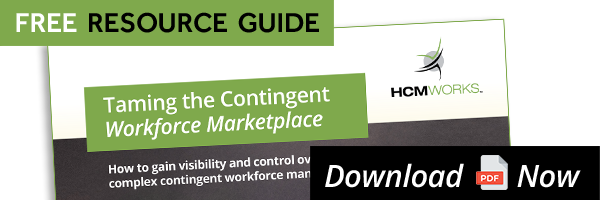Though the rise of the contingent worker has brought many competitive advantages to companies all over the U.S., it can be risky business. Using contingent labor puts you at risk of independent contractor misclassification. Although labelling employees as independent contractors on your tax paperwork doesn’t seem like a big deal, it can significantly damage your business. It can lead to costly fines and penalties, back taxes, interest fees, lawsuits, and even jail time. The U.S. government takes independent contractor misclassification seriously, and the costs of this error can run into the millions. Can you really risk it?
If you want to keep using contingent workers but also ensure that you’re eliminating your risk of independent contractor misclassification, use these five steps.
1. Establish a Process for Assessing Classification Status
Though this might seem cumbersome, establishing a process to assess the classification status of every one of your current and future employees is one of the most effective ways to ensure compliance. Not only should you be using a formal assessment process once new employees and contractors are being onboarded, you should also be checking in on a regular basis to ensure that their roles have not changed. Ensure that your process is well documented in case of a government audit or employee lawsuit.
2. Understand the Differences
It’s easier to protect yourself from independent contractor misclassification if you fully understand the differences between these two groups of workers. The economics realities test can provide insights. Among others, the test includes the following factors:
- Whether or not the work being performed is integral to the company
- The worker’s opportunity for profit or loss
- The ownership of tools and equipment
- The degree of financial and behavioral control
- The worker’s special skills
- The length of the engagement
Though this test shouldn’t be applied as a checklist and should be looked at as more qualitative than quantitative, it can help you better understand what legally makes someone an independent contractor.
3. Manage Employees and Independent Contractors Differently
Under the law, employees and contingent workers are not the same, and thus, they should not be treated or managed in the same way. Make sure there is a clear difference in the way you handle these two types of workers. Ensure that they are not doing the exact same work. Ensure that you are not providing your contractors with the same perks and incentives as your employees. Do not provide health coverage and other benefits to contingent workers. Do not pay them in the same way. Do not provide contingent workers a job description; rather, provide a list of work and deliverables. Do not exhibit behavioral control over your contingent labor. Do not provide tools, equipment, or training to contractors even if you provide them to your employees.
Though it might seem easier to use the same management processes and procedures for both groups and even seem fairer to do so, this puts you at significant risk of independent contractor misclassification.
4. Use a Staffing Firm
Another way to minimize your risk of independent contractor misclassification is to hire your contingent workers through a staffing firm. By leasing employees through a third-party, you are shifting the majority of the risk onto the staffing company. However, you could still be seen as a joint employer for the purposes of the compliance liability, so ensure that you are working with a reputable agency that has a risk management team on staff.
5. Outsource Contingent Workforce Management
Independent contractor classification can be complex. Many of your workers will be in the gray area and it can be difficult to make an accurate determination, no matter how well you understand the differences and how effective your assessment processes are. The best way to eliminate the risk of independent contractor misclassification is to outsource your contingent workforce management to a managed services provider that has the experience and expertise to ensure compliance.



